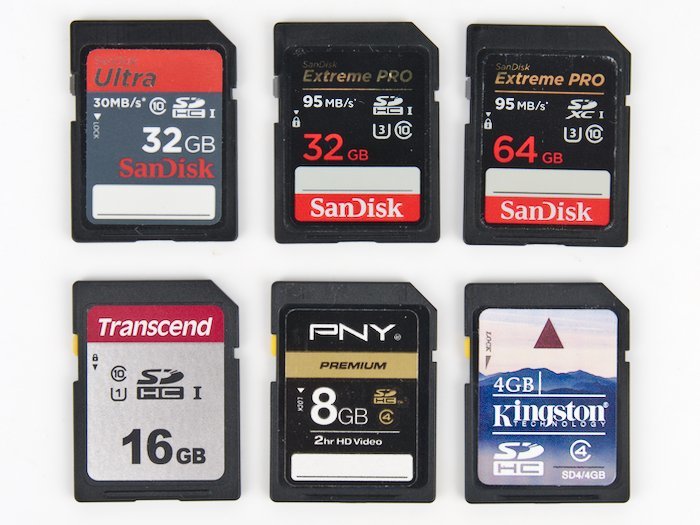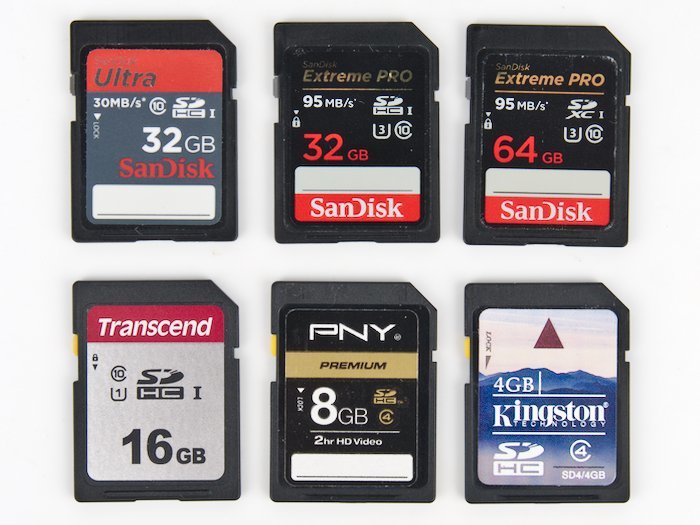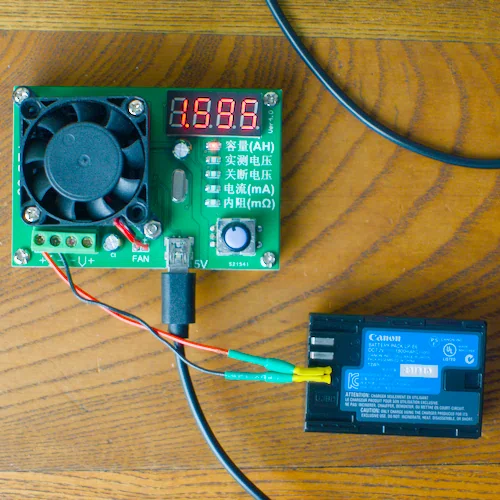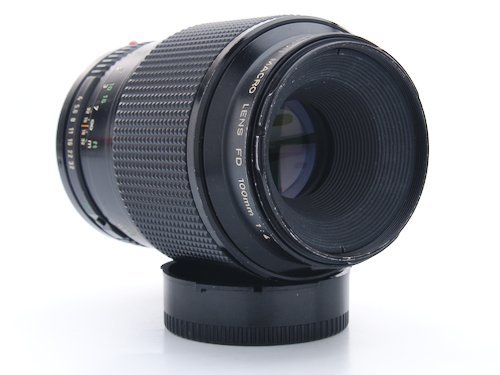
Canon FD 100mm f/4 Macro Lens Review
- Nathaniel Stephan
- Canon fd , Canon fd lenses , Macro lenses
- April 20, 2019
Table of Contents
The Canon FD 100mm f/4 macro lens is front heavy and only goes to 1:2 magnification. Despite that, the lens is sharp when stopped down to f/8.
A 50mm extension tube is needed to get to 1:1 magnification. Adapting the lens to a mirrorless camera body adds even more extension. For the lens to be usable on a mirrorless camera, a tripod collar will be needed. The amount of weight from the lens will damage a camera mount.
If you can deal with the issues of the lens being long, it does produce sharp images with no chromatic aberrations and little distortion.
Used Prices and Where to Buy
I checked prices in November of 2018. Based on what you should expect to pay for a used vintage macro lens. So in terms of vintage and macro lenses in the 90-105mm focal length range, you should expect to find copies of the lens at the bottom of the price range.
The earlier S.C. version of the lens is also selling in the same price range. A Canon Extensin Tube 50 should also be inexpensive to pick up.
Affiliate Advertising Disclosure
Outside the Shot is a participant in the Amazon Services LLC Associates Program, an affiliate advertising program designed to provide a means for sites to earn advertising fees by advertising and linking to Amazon.com.
As an eBay Partner, I may be compensated if you make a purchase. I also participate in affiliate advertising programs with KEH and Adorama. More can be found on the Affiliate Disclosure page.
See current price and more information on:
Unless you are a collector, buy a generic 52mm screw-in lens hood. The Canon BW-52A, BW-52B, and BW-52C were surprisingly expensive if they were even available.
Comparable Lenses
Lenses that do not need extension tubes are better choices for adapting to mirrorless cameras. Having to buy a tripod collar negates any possible savings by buying the Canon 100mm.
If you want a Canon FD mount lens, look for the various branding of the Kiron 105mm f/2.8 or Komine 90mm f/2.8 macro lenses.
If the lens doesn’t have to be an FD mount, still look for the Kiron and Komine lenses. Just make sure that you are able to adapt the lens to your camera body of choice. Plus, you should have a wider selection of lenses.
- Vivitar 90mm f/2.8 - Made by Komine
- Lester A Dine 105mm f/2.8 - Made by Kiron
- Tamron 90mm f/2.5 Adaptall
- Nikon Micro Nikkor AF 105mm f/2.8
Lens Specs
| Manufacture | Canon |
| Made in | Japan |
| Year Released | 1979 |
| Original Price | $279.95* |
| Elements Groups | 5 ele. 3 gr. |
| Focal Length | 100mm |
| Aperture | f/4-32 |
| # Aperture Blades | 6 |
| Aperture control | Manual, Auto Diaphragm |
| Focus type | Manual |
| Hard infinity stop | Yes |
| Magnification | 1:2, 1:1 w/ extension tube |
| Minimum Focus Distance | 45cm (18”) / ? |
| Working Distance | 10.5" @ 1:2 |
| Filter Threads | 52mm |
| Weight | 455, ?g w/ extension tube |
| Dimensions | ⌀70mm x 118mm (2.75" x 4.625") |
Note: Price pulled from a 1985 Competitive Camera Corp Catalogue.
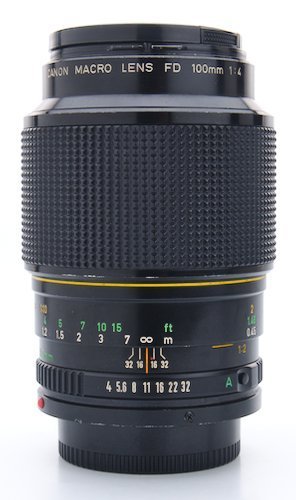
Accessories
- Canon Extension Tube FD 50. Any 50mm extension tube can be used to get the lens to 1:1 magnification.
- There is no designated lens hood. The BW-52A lens hood will work. Generic 52mm screw in lens hoods are a cheaper option.
- The LH-C18 hard case and LS-A18 soft case are the two cases Canon made that will fit the lens.
Lens Versions
- Canon 100mm Macro Lens 1:4 S.C. - 1975
- Canon 100mm Macro Lens 1:4 - 1979
Build Quality, Design, and Sample Variation
Thanks to the new FD mount on the lens, mounting the lens is easier than the original FD mount. The lens was used with a FD to Sony E-mount adapter on a A7.
Manually controlling the aperture requires the adapter to hold that aperture lever closed. Manually locking the aperture in place is a step that is not required for bayonet mounts, like the Nikon F, Pentax PK, Minolta MD, or Olympus OM.
Extension Tube
Using an extension tube to get 1:1 magnification makes this an unattractive lens to adapt to mirrorless cameras. All of the elements in the lens are all located towards the front.
Focusing to 1:2 magnification moves the lens elements to the front lens. The result is a front heavy lens.
Being front heavy will put strain on the camera mount. Adding extension from an adapter and extension tube make the problem worse. A tripod collar will need so the mount is not bent or pulled out of the camera.
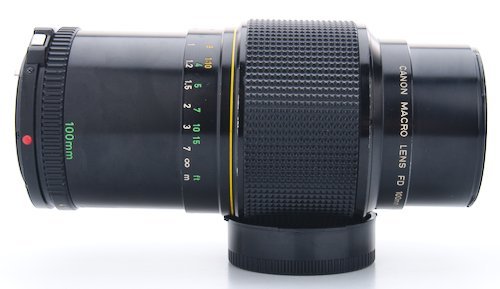
Cleaning the Rear Element
The rear element is deeply recessed. Flocking is in the rear of the lens to help reduce reflections and glare.
I had trouble reaching the rear element to be able to clean it. The flocking grabbed fibers from the lens wipe I was trying to use.
After cleaning the element, I then had to clean fibers from the flocking. The process was annoying, though I doubt the rear element will often need cleaning.
Focus Ring
There is approximately 360 degrees worth of travel for the focus ring. The focus and aperture rings turn smoothly on my copy of the lens. This is good because most of the vintage macro lenses I have tested have had tight focus rings.
Aperture Ring
Half stops are between the marked apertures. A green A for auto is available for camera bodies that support that feature.
The front element is not as recessed as some other macro lenses I have tested. Changing focus does not change the distance between the front element and front of the lens. A lens hood may be necessary to prevent glare in more extreme situations.
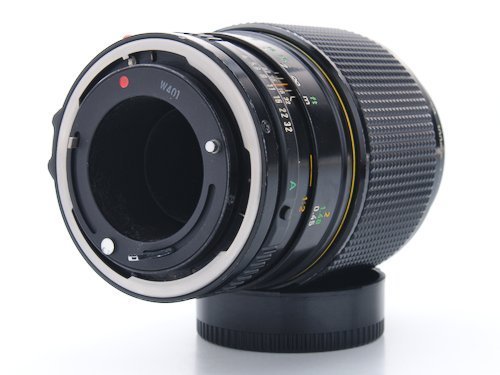
Testing setup
A Sony A7 was used with a cheap Fotasy FD to E-mount adapter. There was no way to see if the adapter was locking the aperture on the lens in place.
Not having the aperture locked ruined a series of test shots. Changing the aperture on ring did not change the lens aperture. I ended up adding registration marks for visual verification the adapter was setup correctly.
Usage & Working Distance
The lens is unusable without support.
I was immediately worried about the mount on my Sony A7. Focusing at 1:2 magnification puts all the weight to the front of the lens. I could see the lens flex when it was not supported. This put me off from using the lens.
At 1:2 magnification the Canon has 26cm (10.25") of working distance. That’s plenty of space, but I don’t have problems with the working distance of 50-60mm macro lenses at 1:2.

1991 5 Deutsche Mark Bank Note 100% Crop at 1:2 magnification.
Test Shot Sharpness Comparison
There was no noticeable chromatic aberration at an stop. The lens is also well corrected for distortion and provides a flat field of view.
- f/4 - Center sharpness is quite good, but the corners are not.
- f/5.6 - Except for the bottom left corner, everything is sharp. The bottom left corner is likely an error on my part.
- f/8 - Everything is tack sharp corner to corner.
- f/11 - Comparable to f/8 with no signs of diffraction yet.
- f/16, f/22, f/32 - Diffraction causes a loss of detail and dust specs start showing.
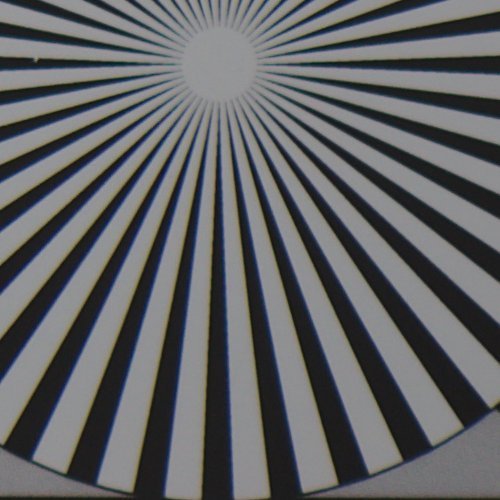
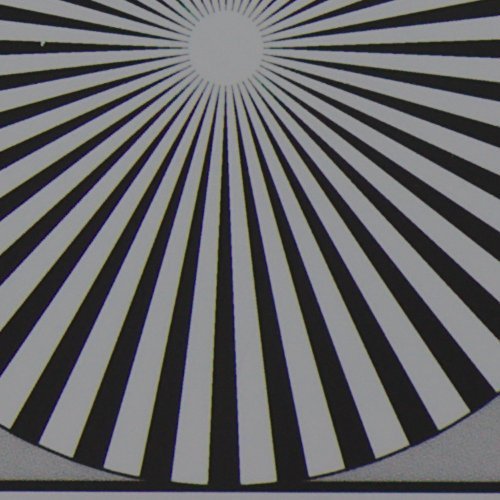
Conclusion
The lens is a great choice to use on a FD mount camera. Pricing is reasonable and it is as nice to use as any other canon FD lens.
I would pass on adapting it to a mirrorless body. Usability is poor due to the length. Plus, the breech lock mount can be annoying to use.
